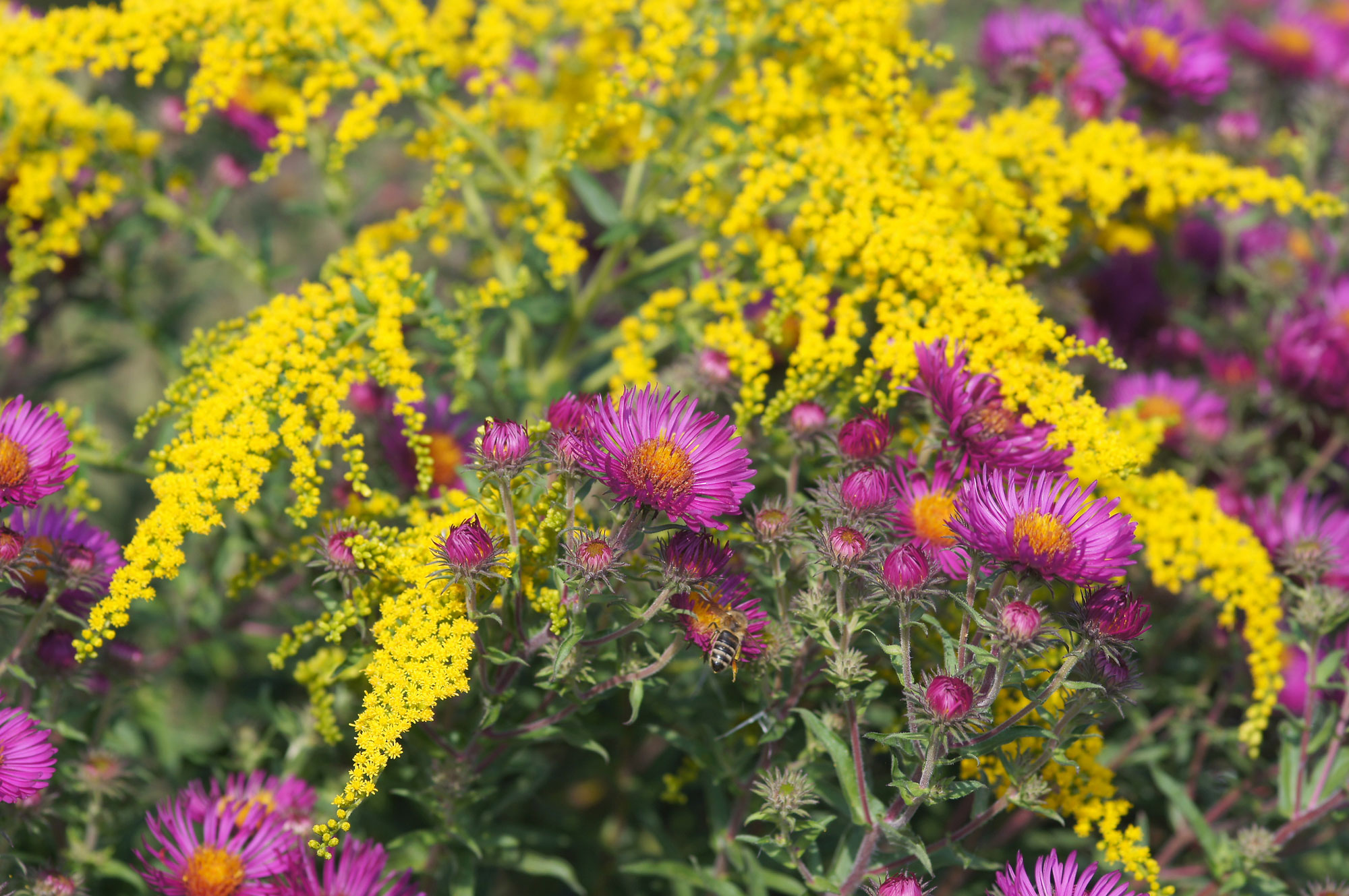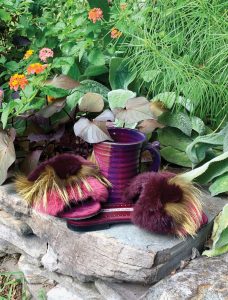- © 2024 Annapolis Home Magazine
- All Rights Reserved

In early fall, when I visit my garden, usually with a cup of coffee in hand, I am not ready to wind down the season. Even though the coneflowers have faded and the black-eyed susans have darkened and bend towards the earth, as if giving up, I want lush and developing beauty. I turned to landscape architect Jay Graham of Moody Graham Landscape Architecture for direction. During his 40+/- year career, which includes helping to found the University of Virginia’s Landscape Architecture program, I knew he would have something interesting to say. “My favorite composition this time of year is asters and goldenrod: the asters give the blues and purples, and the goldenrod, yellow-golds and yellow.” Leave it to a landscape architect to combine two of the most gorgeous colors in the color wheel. He makes the observation that plants that have the same requirements do best when planted together in drifts. “It is something I still continue to learn. ‘But though an old man, I am but a young gardener,’” he says, invoking Thomas Jefferson’s famous quote. He knows some dismiss goldenrod, blaming it for hay fever. This is a mistake! It is widely confused with ragweed, which blooms at the same time.

There is much to admire about goldenrod. It is said to bring good fortune, its young leaves are edible, and Native Americans used its seeds for food. It provides nectar for migrating butterflies, and when planted near the vegetable garden, it attracts dangerous bugs. Sadly, it is considered a weed in most of North America. The British know better and adapted goldenrod as a garden plant far earlier than Americans, who did not embrace it in the garden until the 1980s. Someone else quite famous knew about goldenrod: Thomas Edison. Edison experimented with goldenrod to produce rubber, which it naturally contains. He created a fertilization and cultivation process to produce a 12-foot plant that yielded 12% rubber. In fact, the tires he received from his friend Henry Ford were made from goldenrod.
Some say art gives us some version of truth. I believe this about herbs and flowers that rise from the ground and blossom without questioning their source. They are truth. When life becomes confusing and complicated, as it often does, goldenrod’s brash presence and unequivocal power, especially when paired with a delicate aster, are awe-inspiring. That it gives so many other wonderful things to us and to the environment is admirable; its place in the lifecycle is essential, as is ours. If you are up for it, incorporate these beauties into your own life cycle and your garden’s. They will brighten up your fall and lighten your heart, truly.
Main Photo: Goldenrod, Solidago, is a clump-forming perennial wildflower that exists on rainwater and adds a golden-hued beauty to the landscape. With over 100 different species, all goldenrods are late bloomers, flowering in late summer throughout fall with stunning bright yellow flowers.
Follow Kymberly Taylor, editor-in-chief of AHM, on Instagram and Facebook: @thehighheeledgardener
Annapolis Home Magazine
Vol. 10, No. 5 2019